Yixiong Chen
Are Vision Language Models Ready for Clinical Diagnosis? A 3D Medical Benchmark for Tumor-centric Visual Question Answering
May 25, 2025Abstract:Vision-Language Models (VLMs) have shown promise in various 2D visual tasks, yet their readiness for 3D clinical diagnosis remains unclear due to stringent demands for recognition precision, reasoning ability, and domain knowledge. To systematically evaluate these dimensions, we present DeepTumorVQA, a diagnostic visual question answering (VQA) benchmark targeting abdominal tumors in CT scans. It comprises 9,262 CT volumes (3.7M slices) from 17 public datasets, with 395K expert-level questions spanning four categories: Recognition, Measurement, Visual Reasoning, and Medical Reasoning. DeepTumorVQA introduces unique challenges, including small tumor detection and clinical reasoning across 3D anatomy. Benchmarking four advanced VLMs (RadFM, M3D, Merlin, CT-CHAT), we find current models perform adequately on measurement tasks but struggle with lesion recognition and reasoning, and are still not meeting clinical needs. Two key insights emerge: (1) large-scale multimodal pretraining plays a crucial role in DeepTumorVQA testing performance, making RadFM stand out among all VLMs. (2) Our dataset exposes critical differences in VLM components, where proper image preprocessing and design of vision modules significantly affect 3D perception. To facilitate medical multimodal research, we have released DeepTumorVQA as a rigorous benchmark: https://github.com/Schuture/DeepTumorVQA.
CoCa-CXR: Contrastive Captioners Learn Strong Temporal Structures for Chest X-Ray Vision-Language Understanding
Feb 27, 2025Abstract:Vision-language models have proven to be of great benefit for medical image analysis since they learn rich semantics from both images and reports. Prior efforts have focused on better alignment of image and text representations to enhance image understanding. However, though explicit reference to a prior image is common in Chest X-Ray (CXR) reports, aligning progression descriptions with the semantics differences in image pairs remains under-explored. In this work, we propose two components to address this issue. (1) A CXR report processing pipeline to extract temporal structure. It processes reports with a large language model (LLM) to separate the description and comparison contexts, and extracts fine-grained annotations from reports. (2) A contrastive captioner model for CXR, namely CoCa-CXR, to learn how to both describe images and their temporal progressions. CoCa-CXR incorporates a novel regional cross-attention module to identify local differences between paired CXR images. Extensive experiments show the superiority of CoCa-CXR on both progression analysis and report generation compared to previous methods. Notably, on MS-CXR-T progression classification, CoCa-CXR obtains 65.0% average testing accuracy on five pulmonary conditions, outperforming the previous state-of-the-art (SOTA) model BioViL-T by 4.8%. It also achieves a RadGraph F1 of 24.2% on MIMIC-CXR, which is comparable to the Med-Gemini foundation model.
MoLE: Enhancing Human-centric Text-to-image Diffusion via Mixture of Low-rank Experts
Oct 30, 2024



Abstract:Text-to-image diffusion has attracted vast attention due to its impressive image-generation capabilities. However, when it comes to human-centric text-to-image generation, particularly in the context of faces and hands, the results often fall short of naturalness due to insufficient training priors. We alleviate the issue in this work from two perspectives. 1) From the data aspect, we carefully collect a human-centric dataset comprising over one million high-quality human-in-the-scene images and two specific sets of close-up images of faces and hands. These datasets collectively provide a rich prior knowledge base to enhance the human-centric image generation capabilities of the diffusion model. 2) On the methodological front, we propose a simple yet effective method called Mixture of Low-rank Experts (MoLE) by considering low-rank modules trained on close-up hand and face images respectively as experts. This concept draws inspiration from our observation of low-rank refinement, where a low-rank module trained by a customized close-up dataset has the potential to enhance the corresponding image part when applied at an appropriate scale. To validate the superiority of MoLE in the context of human-centric image generation compared to state-of-the-art, we construct two benchmarks and perform evaluations with diverse metrics and human studies. Datasets, model, and code are released at https://sites.google.com/view/mole4diffuser/.
AbdomenAtlas: A Large-Scale, Detailed-Annotated, & Multi-Center Dataset for Efficient Transfer Learning and Open Algorithmic Benchmarking
Jul 23, 2024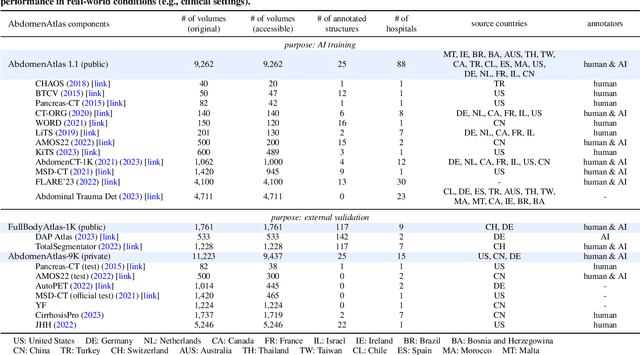

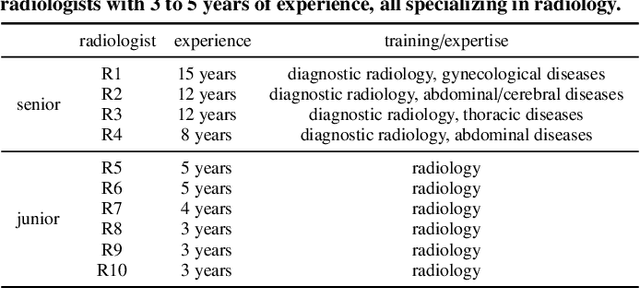
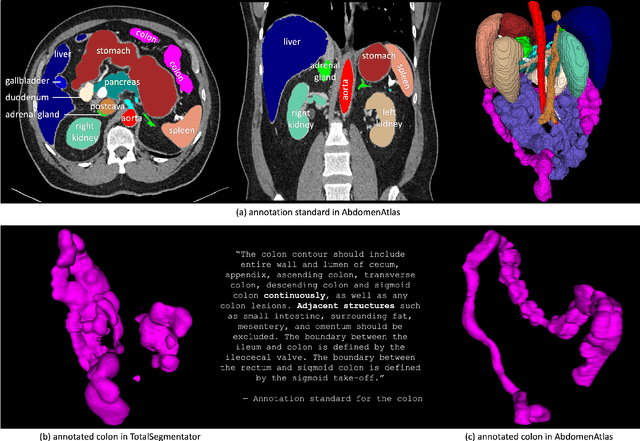
Abstract:We introduce the largest abdominal CT dataset (termed AbdomenAtlas) of 20,460 three-dimensional CT volumes sourced from 112 hospitals across diverse populations, geographies, and facilities. AbdomenAtlas provides 673K high-quality masks of anatomical structures in the abdominal region annotated by a team of 10 radiologists with the help of AI algorithms. We start by having expert radiologists manually annotate 22 anatomical structures in 5,246 CT volumes. Following this, a semi-automatic annotation procedure is performed for the remaining CT volumes, where radiologists revise the annotations predicted by AI, and in turn, AI improves its predictions by learning from revised annotations. Such a large-scale, detailed-annotated, and multi-center dataset is needed for two reasons. Firstly, AbdomenAtlas provides important resources for AI development at scale, branded as large pre-trained models, which can alleviate the annotation workload of expert radiologists to transfer to broader clinical applications. Secondly, AbdomenAtlas establishes a large-scale benchmark for evaluating AI algorithms -- the more data we use to test the algorithms, the better we can guarantee reliable performance in complex clinical scenarios. An ISBI & MICCAI challenge named BodyMaps: Towards 3D Atlas of Human Body was launched using a subset of our AbdomenAtlas, aiming to stimulate AI innovation and to benchmark segmentation accuracy, inference efficiency, and domain generalizability. We hope our AbdomenAtlas can set the stage for larger-scale clinical trials and offer exceptional opportunities to practitioners in the medical imaging community. Codes, models, and datasets are available at https://www.zongweiz.com/dataset
Quality Sentinel: Estimating Label Quality and Errors in Medical Segmentation Datasets
Jun 01, 2024Abstract:An increasing number of public datasets have shown a transformative impact on automated medical segmentation. However, these datasets are often with varying label quality, ranging from manual expert annotations to AI-generated pseudo-annotations. There is no systematic, reliable, and automatic quality control (QC). To fill in this bridge, we introduce a regression model, Quality Sentinel, to estimate label quality compared with manual annotations in medical segmentation datasets. This regression model was trained on over 4 million image-label pairs created by us. Each pair presents a varying but quantified label quality based on manual annotations, which enable us to predict the label quality of any image-label pairs in the inference. Our Quality Sentinel can predict the label quality of 142 body structures. The predicted label quality quantified by Dice Similarity Coefficient (DSC) shares a strong correlation with ground truth quality, with a positive correlation coefficient (r=0.902). Quality Sentinel has found multiple impactful use cases. (I) We evaluated label quality in publicly available datasets, where quality highly varies across different datasets. Our analysis also uncovers that male and younger subjects exhibit significantly higher quality. (II) We identified and corrected poorly annotated labels, achieving 1/3 reduction in annotation costs with optimal budgeting on TotalSegmentator. (III) We enhanced AI training efficiency and performance by focusing on high-quality pseudo labels, resulting in a 33%--88% performance boost over entropy-based methods, with a cost of 31% time and 4.5% memory. The data and model are released.
Multi-Scale Feature Fusion Quantum Depthwise Convolutional Neural Networks for Text Classification
May 22, 2024Abstract:In recent years, with the development of quantum machine learning, quantum neural networks (QNNs) have gained increasing attention in the field of natural language processing (NLP) and have achieved a series of promising results. However, most existing QNN models focus on the architectures of quantum recurrent neural network (QRNN) and self-attention mechanism (QSAM). In this work, we propose a novel QNN model based on quantum convolution. We develop the quantum depthwise convolution that significantly reduces the number of parameters and lowers computational complexity. We also introduce the multi-scale feature fusion mechanism to enhance model performance by integrating word-level and sentence-level features. Additionally, we propose the quantum word embedding and quantum sentence embedding, which provide embedding vectors more efficiently. Through experiments on two benchmark text classification datasets, we demonstrate our model outperforms a wide range of state-of-the-art QNN models. Notably, our model achieves a new state-of-the-art test accuracy of 96.77% on the RP dataset. We also show the advantages of our quantum model over its classical counterparts in its ability to improve test accuracy using fewer parameters. Finally, an ablation test confirms the effectiveness of the multi-scale feature fusion mechanism and quantum depthwise convolution in enhancing model performance.
A Novel Framework Based on Variational Quantum Algorithms: Revolutionizing Image Classification
Dec 13, 2023Abstract:Image classification is a crucial task in machine learning. In recent years, this field has witnessed rapid development, with a series of image classification models being proposed and achieving state-of-the-art (SOTA) results. Parallelly, with the advancement of quantum technologies, quantum machine learning has attracted a lot of interest. In particular, a class of algorithms known as variational quantum algorithms (VQAs) has been extensively studied to improve the performance of classical machine learning. In this paper, we propose a novel image classification framework using VQAs. The major advantage of our framework is the elimination of the need for the global pooling operation typically performed at the end of classical image classification models. While global pooling can help to reduce computational complexity, it often results in a significant loss of information. By removing the global pooling module before the output layer, our approach allows for effectively capturing more discriminative features and fine-grained details in images, leading to improved classification performance. Moreover, employing VQAs enables our framework to have fewer parameters compared to the classical framework, even in the absence of global pooling, which makes it more advantageous in preventing overfitting. We apply our method to different SOTA image classification models and demonstrate the superiority of the proposed quantum architecture over its classical counterpart through a series of experiments on public datasets.
Human Preference Score v2: A Solid Benchmark for Evaluating Human Preferences of Text-to-Image Synthesis
Jun 15, 2023Abstract:Recent text-to-image generative models can generate high-fidelity images from text inputs, but the quality of these generated images cannot be accurately evaluated by existing evaluation metrics. To address this issue, we introduce Human Preference Dataset v2 (HPD v2), a large-scale dataset that captures human preferences on images from a wide range of sources. HPD v2 comprises 798,090 human preference choices on 430,060 pairs of images, making it the largest dataset of its kind. The text prompts and images are deliberately collected to eliminate potential bias, which is a common issue in previous datasets. By fine-tuning CLIP on HPD v2, we obtain Human Preference Score v2 (HPS v2), a scoring model that can more accurately predict text-generated images' human preferences. Our experiments demonstrate that HPS v2 generalizes better than previous metrics across various image distributions and is responsive to algorithmic improvements of text-to-image generative models, making it a preferable evaluation metric for these models. We also investigate the design of the evaluation prompts for text-to-image generative models, to make the evaluation stable, fair and easy-to-use. Finally, we establish a benchmark for text-to-image generative models using HPS v2, which includes a set of recent text-to-image models from the academia, community and industry. The code and dataset is / will be available at https://github.com/tgxs002/HPSv2.
X-IQE: eXplainable Image Quality Evaluation for Text-to-Image Generation with Visual Large Language Models
May 26, 2023



Abstract:This paper introduces a novel explainable image quality evaluation approach called X-IQE, which leverages visual large language models (LLMs) to evaluate text-to-image generation methods by generating textual explanations. X-IQE utilizes a hierarchical Chain of Thought (CoT) to enable MiniGPT-4 to produce self-consistent, unbiased texts that are highly correlated with human evaluation. It offers several advantages, including the ability to distinguish between real and generated images, evaluate text-image alignment, and assess image aesthetics without requiring model training or fine-tuning. X-IQE is more cost-effective and efficient compared to human evaluation, while significantly enhancing the transparency and explainability of deep image quality evaluation models. We validate the effectiveness of our method as a benchmark using images generated by prevalent diffusion models. X-IQE demonstrates similar performance to state-of-the-art (SOTA) evaluation methods on COCO Caption, while overcoming the limitations of previous evaluation models on DrawBench, particularly in handling ambiguous generation prompts and text recognition in generated images. Project website: https://github.com/Schuture/Benchmarking-Awesome-Diffusion-Models
Label-Free Liver Tumor Segmentation
Mar 27, 2023
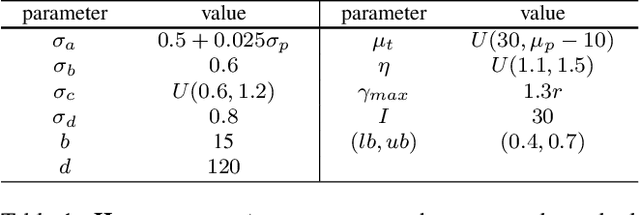

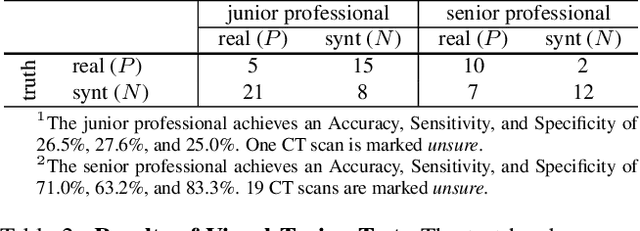
Abstract:We demonstrate that AI models can accurately segment liver tumors without the need for manual annotation by using synthetic tumors in CT scans. Our synthetic tumors have two intriguing advantages: (I) realistic in shape and texture, which even medical professionals can confuse with real tumors; (II) effective for training AI models, which can perform liver tumor segmentation similarly to the model trained on real tumors -- this result is exciting because no existing work, using synthetic tumors only, has thus far reached a similar or even close performance to real tumors. This result also implies that manual efforts for annotating tumors voxel by voxel (which took years to create) can be significantly reduced in the future. Moreover, our synthetic tumors can automatically generate many examples of small (or even tiny) synthetic tumors and have the potential to improve the success rate of detecting small liver tumors, which is critical for detecting the early stages of cancer. In addition to enriching the training data, our synthesizing strategy also enables us to rigorously assess the AI robustness.
 Add to Chrome
Add to Chrome Add to Firefox
Add to Firefox Add to Edge
Add to Edge